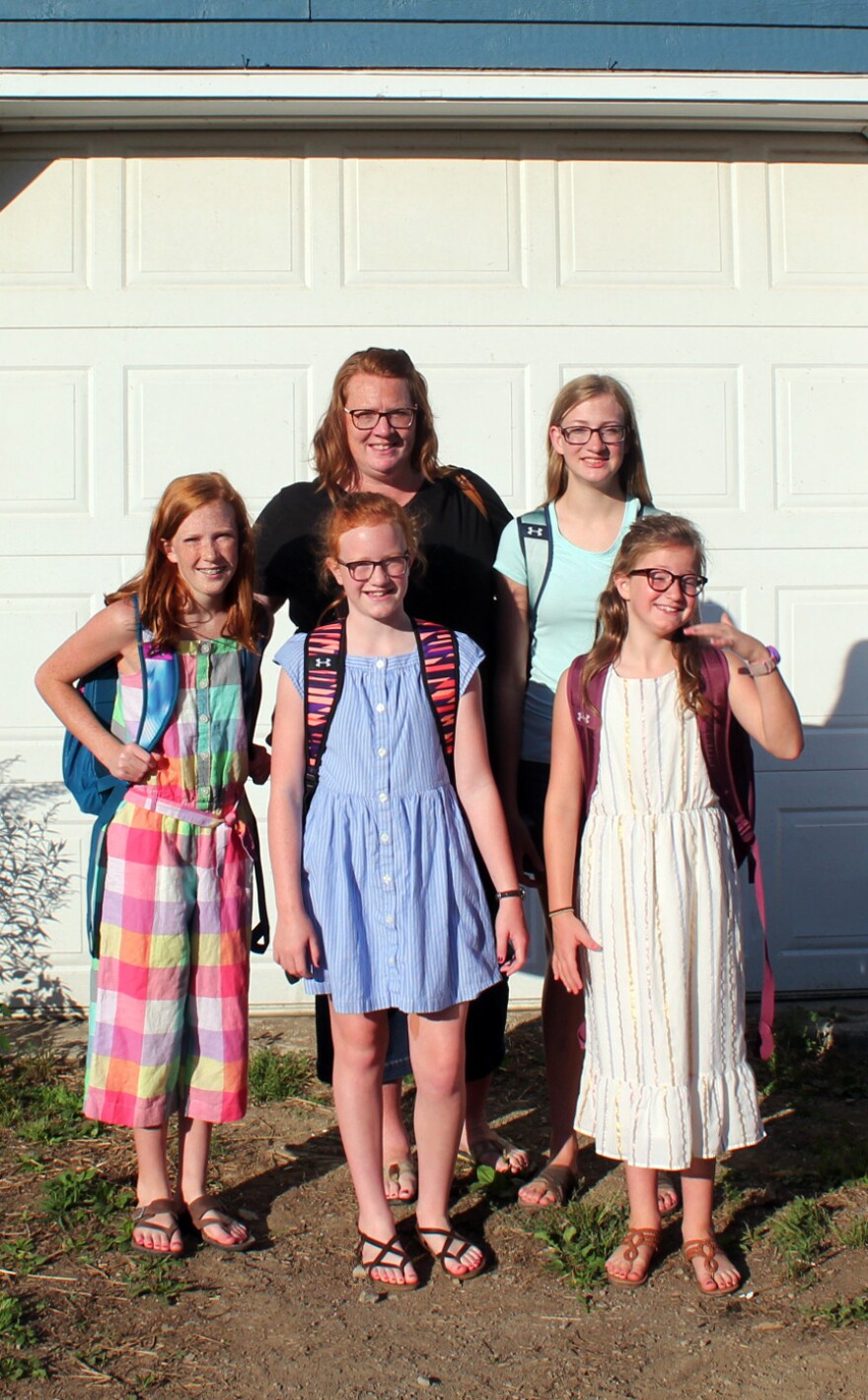Updated at 4:06 p.m. ET
Sixth-grader Charlie Pierce says the hardest part of going back to school wasn't the masks or the temperature checks. It was not being able to hug the friends she hadn't seen in months.
"My friends kind of really wanted to hug me," Charlie says.
"We had talked about keeping our distance," her mom, Ami Pierce, adds, "because we are huggers by nature."
Charlie and her mom live in Aroostook County, Maine, near the Canadian border. Even after reports of an outbreak at a wedding reception,Maine has one of the country's lowest daily case rates of COVID-19, and Aroostook County has reported fewer than 40 cases since March. In mid-August, Charlie's school district, MSAD 42, opened its doors for in-person learning.

"The parents and the community have been waiting for us to go back to school for a long time," says MSAD 42 Superintendent Elaine Boulier.
But even in an area with low infection rates, back to school looks a little different, beginning before students even arrive in the classroom.
As Charlie and her three sisters get ready to head to school in the morning, their mom checks to make sure everyone has their masks, then asks a few required questions: "Is everybody feeling OK? Nobody has scratchy throats or coughs? You tasted your breakfast, right?"
At the entrance of Fort Street Elementary School, Charlie and other students put on masks or face shields, as mandated by the state. Then they stand in a line, 6 feet apart, and walk toward a teacher for a temperature check before going to class.
MSAD 42 is a relatively isolated district and serves only about 400 students. To allow for social distancing, half the students go to school in the morning, with the other half attending in the afternoon. Boulier says that means class sizes can be kept small, often just five to 10 kids. (A few families have opted to continue with remote learning.)
The small class sizes have helped relieve the concerns of some staff, like high school social studies teacher Samantha Drost. She has asthma, which puts her in a higher-risk category for the virus.

"If I was at a bigger school, like Georgia, I probably wouldn't have come back," Drost says.
Georgia has one of the highest daily case rates in the country and has already seen outbreaks in schools.
Drost initially planned to broadcast her lessons from one room, while her students watched her on a screen in another. But on her first day back, she realized it would be hard to connect with her kids that way. She decided to abandon the setup and teach them face to face, with social distancing.
"I told them right up, I'm like, 'I am high-risk,' " Drost says. "'So you just need to follow what I put out. You need to wear your mask. And we're going to make sure that we clean lots. And if we can do that, then we're going to stay in here.' "
So far, Drost says students are keeping their masks on. The district has also added mask breaks — five minutes in the middle of class for kids to go outside and remove their face coverings.
But a lot of uncertainty lingers, such as what to do when flu season hits and what to do in the winter, when temperatures go down to the single digits, making it more difficult to keep windows open to circulate air.
In southern Maine, which has larger schools and more cases, those kinds of questions have prompted many parents and teachers to call on districts to slow their reopening plans. But in Aroostook County, Boulier says the scariest parts of the pandemic still feel far away, making reopening a bit easier.
"This is one time where it's great to live in rural Maine."
Copyright 2021 Maine Public. To see more, visit Maine Public. 9(MDAxODg3MTg0MDEyMTg2NTY3OTI5YTI3ZA004))


